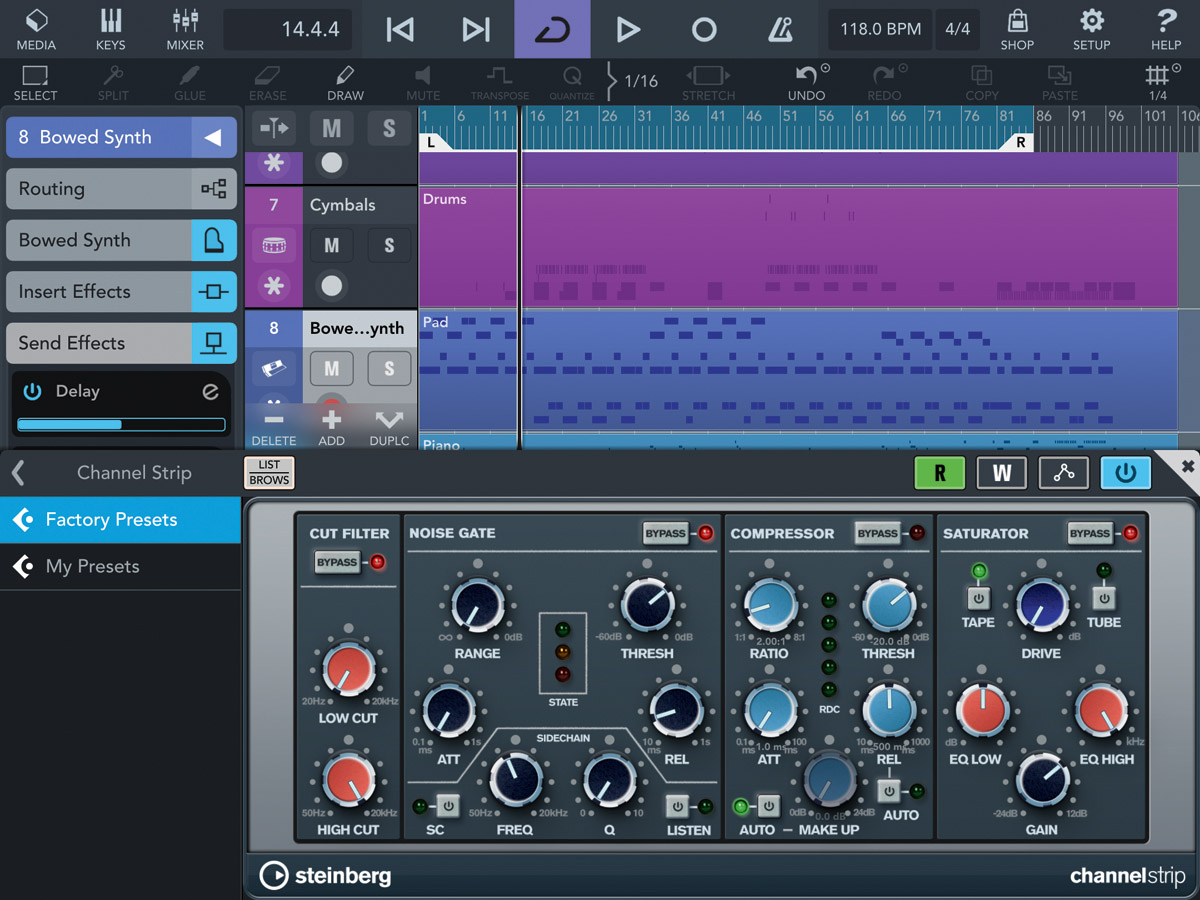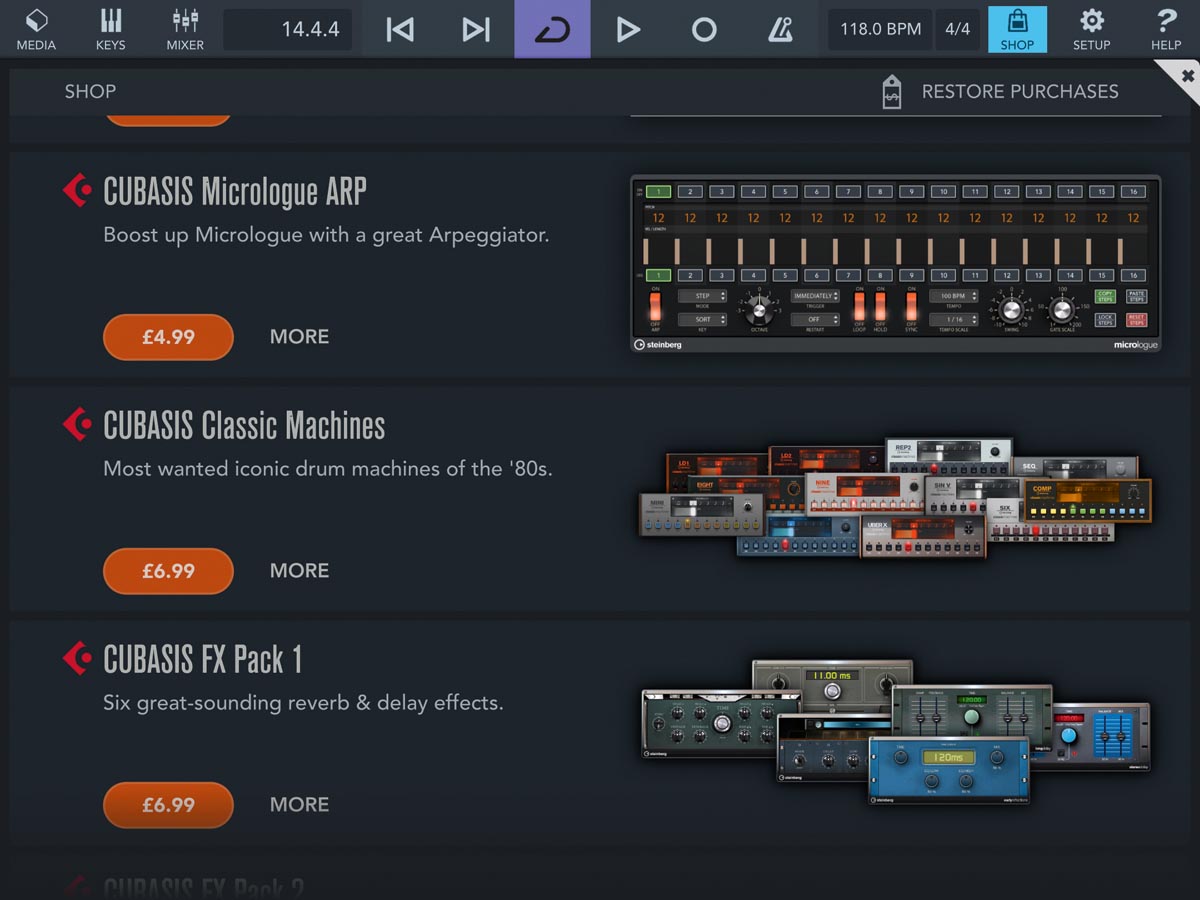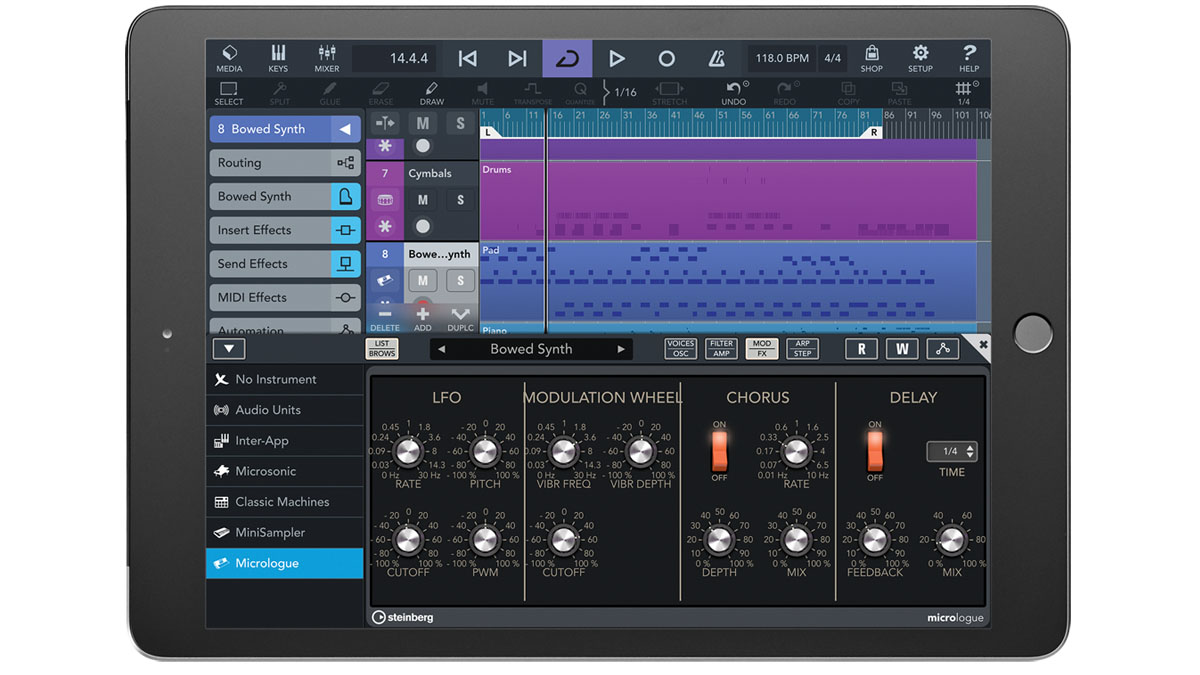MusicRadar Verdict
Cubasis makes a good leap over to the iPhone, and is still the desktop ‘DAW experience’ to beat on the iOS platform
Pros
- +
Proper desktop DAW experience
- +
Works well on an iPhone.
- +
Great new workflow improvements.
- +
Touch options feel intuitive.
- +
Works well with other apps.
Cons
- -
Expensive next to some apps.
- -
Some editing issues need addressing.
MusicRadar's got your back
What is it?
Steinberg’s Cubasis was one of the original fully-featured iPad DAWs, offering as near a desktop music production experience as you could wish for, and all with the wonders of iOS touch control.
It’s always been an expensive option for iPad musicians – who are used to paying single figures for apps – but also one of the most pro; this is Steinberg after all.
The latest version 3 includes many new features like Group Tracks, rearrangeable insert and send effects, a whole bunch of new effect presets and an improved mixer. But the biggest news is that Cubasis now runs on an iPhone.
Steinberg claim that the experience on this device is as good as that on the iPad so that when inspiration strikes on the road, you can start on your phone, progress to the iPad and eventually transfer all of your efforts over to your desktop version of Cubase. It sounds like a seamless music production experience, no matter where you start…
You’ll feel at home, but the big difference is that you can literally touch your song with an iOS device…
Cubasis has always been about transferring a ‘traditional’ DAW experience to the iPad rather than creating an all-new production environment tailored around Apple’s finest device. As such, if you are familiar with most desktop DAWs – that is, tracks running from top to bottom, and arrangement running from left to right – you will be at home here.
Of course the big difference is that you can (literally) touch your song with an iOS device; that is, open edit windows, drag parts, make selections… all with the touch of a finger.
This is explored to the max with the main feature options running from top to bottom at the left of the UI for Routing, Instrument selection, Insert and Send Effects, Automation and much more. Many of these pro options have been added to the app as it has progressed to version 3.
Some of these updates have included Track Freeze, Automation, AU and Audiobus support, Real-Time Time Stretch and the addition of effects packs and HALion Sonic instruments. Of course, the expected in-app purchases have also mounted up along the way, including Steinberg’s own additions, plus third party apps from the likes of Waves.

Performance and verdict
There are some fine additions to v3. Group Tracks means you get a third option on top of Audio and MIDI when you select a new track. If you select it, you can then choose which of your main tracks are grouped so that, say, your entire set of drum tracks can then be processed at the same time.
It’s easy to set up (actually easier than some desktop DAWs!) and a handy new pro feature. The next improvement is to the main Cubasis mixer, which you can now drag to resize up to full screen should you wish, or use different Zoom modes to compress it to different levels in the horizontal axis – great for those of us with thicker fingers.
The number of insert and send effects has also been upped per channel to eight, all of which can now quickly be dragged to reorder. You also get 75 additional effect presets which act as great shortcuts to particular effects (not to mention providing the odd nudge of inspiration along the way).

Cubasis 3 also features redesigns of its instruments including Micrologue (based on the Retrologue synth), MicroSonic (a workstation with 70+ instrument presets) and MiniSampler (for creating your own instruments).
Micrologue is now great to use with three main tabs for oscillators, filters and modulation so you can step through its Moog-like controls with ease. These three instrument options sit alongside links to instruments from the ‘outside world’ via both Inter- App and Audio Units connectivity. Simply select one of these to list everything else you have installed that will run within Cubasis.
Cubasis' offers a variety of in-app purchases. The Micrologue ARP synth (£4.99), Waves effects (from £7.99) and Cubasis Classic Machines (£6.99 for a bunch of great drum machines) are all huge tempters and it’s a shame you don’t get at least one of them with v3.
So those are the main new features for the software as a whole, but of course the big question is: how does it all transfer to the iPhone? We tested Cubasis 3 with an iPhone XR and while that has one of the larger screens in the iPhone range, we did expect the overall feel to suffer. However, the experience is intuitive, neat and surprisingly tactile.
You get to expand the main arrangement window in up to four steps, and editing each part is made much more feasible with the ability to pinch both horizontally and vertically to zoom in. That said, we did find we wanted a little more vertical zoom and the horizontal tends to ‘reset’ to a minum when you click out, which is annoying.
Even though the software has been rebuilt from the ground up, the iPhone experience is still similar to that of the iPad – a good thing, as that has always been a refined and intimate way of putting music together.
All of the audio editing, key editing and effects are on hand, the only difference being that they may take up the whole of the UI, rather than a section of it; otherwise the experience you get on either platform is as DAW-like as it gets.
Cubasis has always been a top-draw mobile DAW, possibly the mobile DAW for more traditional users. If the extra features, of which there are many, don’t grab you and tempt you to buy version 3, then maybe it’s the iPhone support that will.
Certainly if you own both iPad and iPhone then running a parallel production system on both is an absolute tempter, and having serious DAW power on a completely pocket device should also sway you – it’s certainly one of the best iPhone options out there, of that there is no doubt.
Better still, if you’re a Cubase desktop user, then getting Cubasis 3 should be a no-brainer. But even if you choose to use another desktop DAW for your music production needs, then v3 should be a consideration; it’s about as close to a proper desktop/touch combination as you can currently get. Expensive, yes – and those in-app teasers will, we’re sure, tempt you to part with more cash – but, edit niggles aside, this gives you desktop DAW production, all in the confines of your pocket.
MusicRadar Verdict: Cubasis makes a good leap over to the iPhone, and is still the desktop ‘DAW experience’ to beat on the iOS platform.
Hands-on demos
Mobile Apps
MobileMusicPro
The web says
"The effects here are excellent and pretty much identical to those you would expect to find in Cubase. There are ten in total with all of your EQ, dynamics, spatial and modulation needs covered."
MacProVideo
Specifications
- Steinberg Cubasis v3
- Key Features: Universal app support and user interface scale presets (iPhone, iPad), unlimited audio and MIDI tracks, 24 physical inputs, 24 physical outputs, 18 included effect plugins, 472 effect presets, 3 included instruments, 301 instrument sounds, 550 included MIDI and audio loops
- Audio Resolution: 44.1 kHz, 48 kHz, 96 kHz
- Audio Resolution Bit Depth: 16 bit, 24 bit
- Steinberg
Computer Music magazine is the world’s best selling publication dedicated solely to making great music with your Mac or PC computer. Each issue it brings its lucky readers the best in cutting-edge tutorials, need-to-know, expert software reviews and even all the tools you actually need to make great music today, courtesy of our legendary CM Plugin Suite.
With its latest free update, Ableton has finally turned Note into the app I always wanted it to be
Technically capable, but struggle to make your tunes sound musical? 5 simple music theory hacks to make your tracks stand out
"Despite its size, it delivers impressive audio quality and premium functions as well as featuring a good selection of inspired sounds": Roland GO:Piano 88PX review











